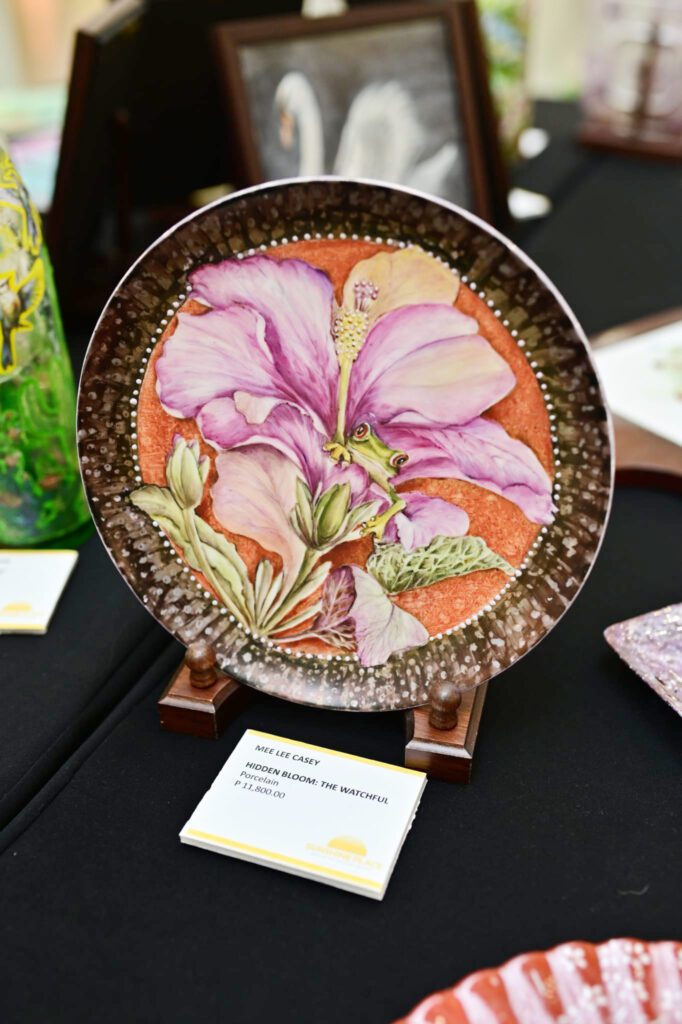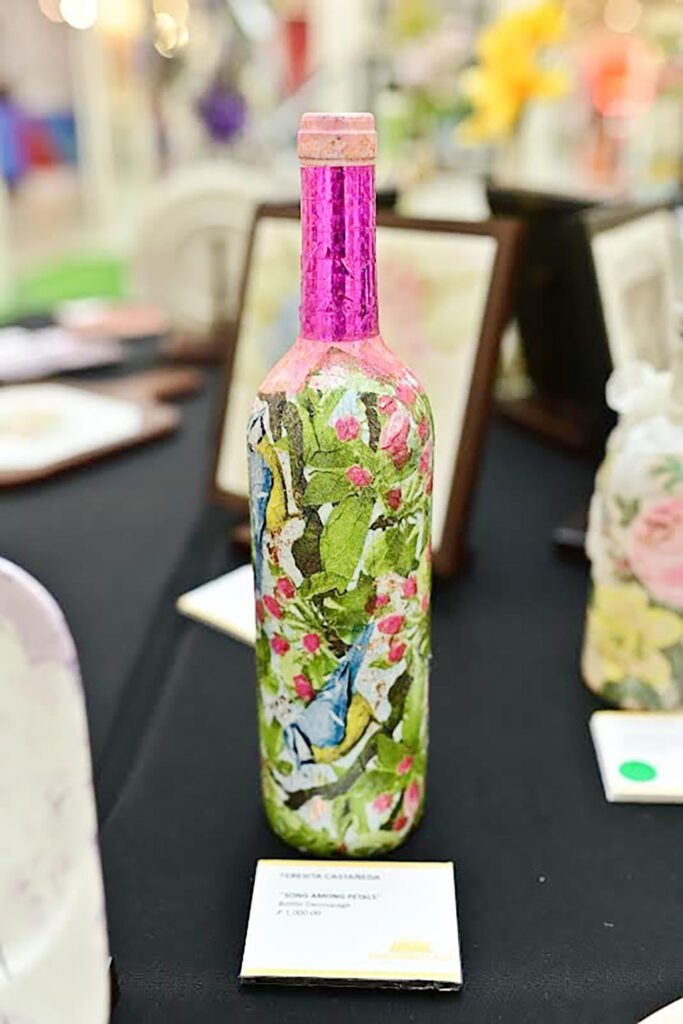‘Creativity takes courage.’ — Henry Matisse
THE above quote from a renowned French artist is an inspiration for amateur artists. Many of us experience idle moments; we have read how dementia attacks when you let yourself remain unoccupied for too long. We know how after retirement we seem to have so much time on our hands so we have to keep busy. From a column “Blessing the Tides” of Dody Lacuna he quotes that the brain of an elderly person is much more practical than is commonly believed. The interaction of the left and right hemisphere of the brain becomes harmonious which expands their creative possibilities. You can find many personalities who started their creative abilities after 60..
So what do we do??

I know from experience how much crafting can be fun, satisfying and calming.
In my previous column, I wrote about the pieces exhibited at the recent “Coloring Lives” show of the craft students of Sunshine Place. One of the tables boasted the prettiest display of trays, plates, bottles, shells and bowls with intricate designs. These were découpage items which easily became the most popular products and quickly sold out of all the items in the exhibit. Furthermore, many of the découpaged bags, bottles and plates elicited the most inquiries from exhibit goers, some of whom expressed interest in joining a class to learn the art. Since it drew the interest of so many people, let me share what I know about the art and technique of découpaging.

Découpage refers to the art of decorating an object by gluing colored paper cutouts onto it in combination with special paint effects, gold leaf and other decorative elements. According to https://www.decoupage.org, decoupage has a long and fascinating history dating as far back as the 12th century. It says that it is the late 17th century lacquer work from the Far East, mostly in the form of furniture, which people tend to associate with today’s découpage. Some famous practitioners included Marie Antoinette, Madame de Pompadour, Lord Byron, Beau Brummel and more recently, the painters Matisse and Picasso.
It was in a crafting class that I first met Tess Colayco who was demonstrating découpaging to a few senior members. Tess explained that she is not an instructor but a “sharer,” sharing her knowledge of découpage. In a lengthy talk with her, Tess related that in her younger days, she used to do porcelain panting — painting over a porcelain plate, tray, vase or any object — which she learned from a lady whom she met when she was studying abroad. She was fascinated by the pieces she saw so she tried doing porcelain painting in between her studies. First, you look for a design for the plate or material you want to work on; then you trace the design over the plate with carbon paper and then color the design with acrylic paint using a small brush. Since in porcelain painting you need to use a kiln to make the colors stick, Tess bought a kiln and brought it back with her to the Philippines.
Tess has since donated this kiln to Sunshine Place where she shares her knowledge of porcelain painting with the members. She has been perfecting this craft, doing varied projects such as bottle painting, bag painting, etc. which has evolved into what she calls “mixed multi-media.”

Porcelain painting is of the same genre as découpage. While with the former, you paint the design of your choice directly on a medium (porcelain or bottle), in decoupage, you take cut-out designs or pictures, or an object, be it ribbons, flowers, lace, textiles buttons or rhinestones, and glue these on to the bottle, box, chair etc. that you wish to decorate. You then finish with a layer of varnish and voila! a plain bottle becomes a keepsake that is perfect for gift giving or home display. One of the students in class stumbled upon a picture of “fairy lights”(string of tiny light bulbs); she ordered these lights online and placed them inside a bottle and the flickering lights made a unique decorative object, perfect for display!
In decoupage, you can be as creative as you like. One crafter experimented with the use of plaster of Paris mixed with water and tinted with a color painted over a bottle (small bottles, big whiskey bottles, even milk bottles), and came out with varied designs. Another experimented with crumpled tissue paper and painted acrylic gloss over it.
You can découpage pretty much anything. A jute bag or a felt bag for instance. Again, you paint varnish over the face of the bag, then over it you glue or paste decorative party napkins. After it dries, you can darken the colors with watercolor or any colored pen. After the paint dries (use a blower to speed up drying), brush an acrylic varnish (emulsion) over the design to make it stick permanently and voila! you have a perfect bag.
It was a pleasant surprise how creativity flowed freely during class. Crafters felt renewed and inspired to discover these hidden talents which they never thought they possessed. It became a new awakening.
After a four-hour session, one walks out of the room with bottles, bags and a bagful of ideas which you can do at home. And most important of all, you share camaraderie with your classmates, you discover the many hidden talents you possess in your retirement years, you find satisfaction when you display your hard-earned work and you proudly share this new knowledge with family and friends.
One encounters pain, one experiences joy and one comes upon “first time” happenings even in the almost final round of the spiral of your life. But one feels happiness in this last try for after all one starts from nothing.



